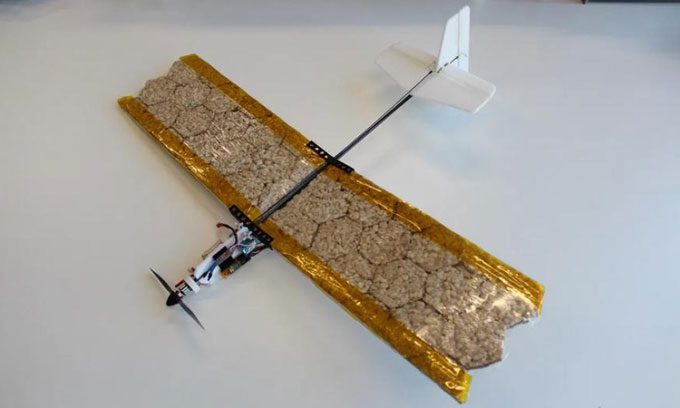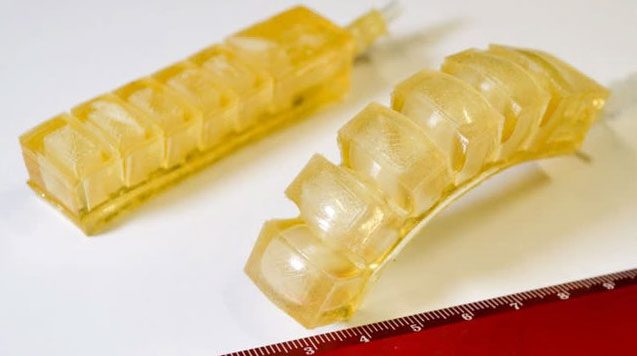New drone model features wings made from rice cakes, providing immediate food for stranded individuals while waiting for rescue personnel.
A research team at the École Polytechnique Fédérale de Lausanne (EPFL) has designed an edible drone that can be used as a life-sustaining food source for individuals trapped in emergency situations, as reported by Design Boom on November 14.

Drone model with wings made from rice cakes. (Photo: EPFL)
The design includes two wings attached to a slender body, complemented by a tail and propeller. While the tail and other structures are made from carbon fiber and foam, the long wings are constructed from edible rice cakes. This drone model could save lost explorers and climbers who are injured or unable to move, providing them with food while they wait for rescue teams to arrive and bring them to safety.
Drones are valuable tools for tasks such as transporting food and medical supplies to people in emergency situations. However, commercial drone models typically carry only 10% to 30% of their own weight in cargo, limiting the amount of food they can transport in a single flight. The EPFL team proposed a solution to increase the food carrying capacity by using edible materials for the drone’s structure.
“We propose a drone that not only transports food but also has an edible component, increasing the food carrying capacity ratio to 50%. Additionally, if left behind after performing a mission in an emergency, this drone is also more biodegradable than inedible types, resulting in less waste for the environment,” the research team stated.
The EPFL experts have successfully built a flying prototype of the drone. Currently, the drone can move at a speed of 10 meters per second, providing 300 kcal and carrying 80g of water. The scientists plan to continue research to increase the edible mass of the drone.
During flight tests, the UAV traveled at an average speed of around 10 meters/second (36 km/h) to avoid affecting the wing structure.
In pursuit of commercialization, the research team hopes to further improve the drone’s durability and flight duration, as well as their ambition to convert the entire structure of the UAV into food.
In addition to emergency assistance scenarios, the concept of edible robots could be very useful in food production processes. Researchers have developed robotic fingers made from gelatin and glycerin, which are both sturdy and easy to produce.

Robotic finger made from gelatin and glycerin. (Photo: Associate Professor Jun Shintake of UEC)
These robotic fingers can participate in food production lines, helping reduce the risk of metal fragments or other hazardous materials contaminating the products.
Moreover, a team of researchers from Japan and Switzerland has developed a magnetic edible material. They mixed salt into gelatin to create a magnetizable substance.
This technology is believed to help create much smaller edible robots compared to current designs.
*It is estimated that adults require between 1,800 to 2,600 calories daily, while children need between 1,000 to 2,000 calories.


















































